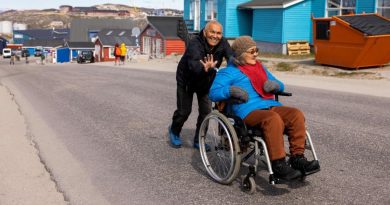Want a bargain holiday home in Finland? Look northward

The most important price factor is proximity to the Helsinki region – and preferably the sea.
There are over half a million holiday homes in Finland, but an Yle survey of data from the National Land Survey shows huge regional differences in their prices. Shoreline cottages in southern Finland can cost ten times as much as comparable properties in central and northern areas.
The survey covers the average prices of completed sales of shoreline cottages between 2018 and 2023.
The most important price factor was proximity to the densely populated Helsinki region, which is home to nearly a quarter of the country’s population.
The costliest summer homes are within the capital region itself, led by Espoo, where the average cabin on the sea or a lake or river will set you back 338,100 euros. That’s followed by neighbouring Kirkkonummi (€285,200) and Sipoo, just east of Helsinki (€265,000).
The other municipalities where holiday homes typically cost more than 200,000 euros are also nearby – Inkoo and Porvoo – as well as Asikkala, on a large lake some 130km north of the capital.
Close behind are Raseborg in western Uusimaa and Jakobstad, nearly 500km away on the west coast, followed by Pirkkala, near Tampere, and Hanko, also in western Uusimaa.
Lapland, northern regions more affordable
At the other extreme, you could buy a waterside cabin for just 35,300 euros in Perho, which is in Central Ostrobothnia, some 400km north of Helsinki, or for around 39,000 in Ylitornio on the Swedish border in southwest Lapland.
Prices averaged just over 40,000 euros in Kiuruvesi and Rautavaara, both also around 500km – or a six-hour drive – from the capital, as well as in Sodankylä in Finnish Lapland.
Zoning usually increases the value of an area, and therefore summer cottages in a zoned district tend to be pricier than those elsewhere – but not always.
“In Uusimaa and many popular cottage areas, there is no longer much difference between the average prices of planned areas and dispersed settlement areas. This is certainly influenced by demand. In some municipalities, the median price may even be slightly higher in dispersed settlement areas than in zoned areas, said Esa Ärölä, a senior specialist at the National Land Survey.
This is the case, for example, in Raseborg and Pargas in the southwest, and Taipalsaari in South Karelia.
Accessibility increasingly important
Many factors other than zoning affect the value of a cottage. According to Ärölä, the type of waterway adjacent to the cabin plays a significant role, with the sea seen as the most valuable, followed by lakes and then rivers.
Buyers prefer spacious views, while a beach facing toward the south or southwest increases the value by 10 percent, with afternoon and evening sun considered more desirable than morning sun.
According to Ärölä, nowadays it is increasingly important that a holiday cottage be accessible by car all year round and that it has water, sewer and electricity connections. The value of an island cottage is usually 60–70 percent of a corresponding leisure home on the mainland. The size of the plot has a strong impact on the value up to around half a hectare, but after that the size plays less of a role, he told Yle.
Last year, sales and prices of summer cottages slumped compared to 2022 and the preceding pandemic years, when Finns tended to travel domestically and some worked remotely from holiday homes.
Related stories from around the North:
Canada: Housing Day shines spotlight on home maintenance in Nunavik, Eye on the Arctic
Finland: Finnair to continue state-subsidised regional flights, including in Lapland, Yle News
Norway: Air France launches flights to three destinations above the Arctic Circle, The Independent Barents Observer



